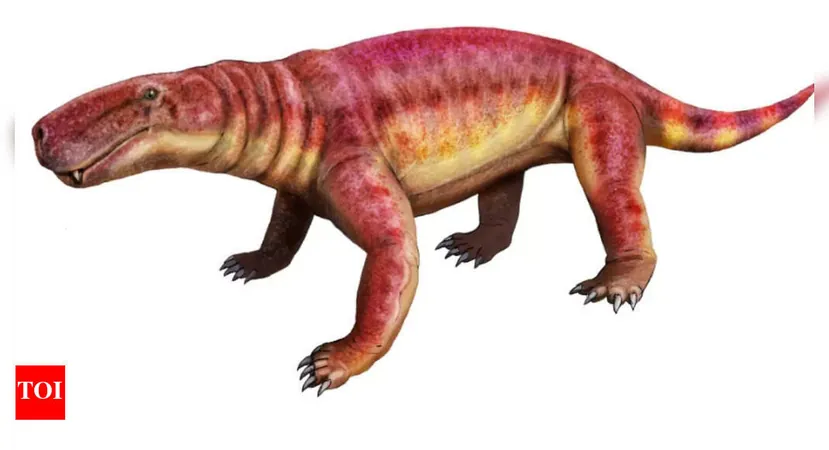
Uncovering Jurassic Mysteries: Dinosaur Footprints Found on Skye, the Isle Where Bonnie Prince Charlie Once Fled
2025-04-15
Author: Noah
A Hidden Treasures of the Jurassic Era
On the stunning Isle of Skye, Scotland, researchers have stumbled upon an astonishing collection of fossilized dinosaur footprints, shedding light on the prehistoric giants that roamed the land over 166 million years ago. These remarkable findings provide a rare glimpse into the island's Jurassic past.
The Historic Location
These footprints were discovered at a site now called Prince Charles' Point, named after the infamous Bonnie Prince Charlie, who reportedly landed there after his defeat in the 1746 Battle of Culloden. What was once a landing spot for a would-be Scottish king is now a treasure trove of ancient secrets.
A Glimpse of Jurassic Life
According to research published in *PLOS One*, a total of 131 footprints spanning the Bathonian age have been cataloged. They provide valuable insights into the lives of these dinosaurs, including their habitats, sizes, and even their social behaviors.
Diverse Species at Play
The footprints unveil the presence of at least two types of dinosaurs: a swift theropod, akin to the fearsome Tyrannosaurus rex, and a gentle giant sauropod, reminiscent of the long-necked Brontosaurus. Among these, 65 tracks were identified as theropod and 58 as sauropod, with a handful still unidentified.
Unique Imprints Tell a Story
These footprints are not just ordinary tracks; they include distinct three-toed impressions of the theropods and circular marks from the sauropods, likely related to the carnivorous Megalosaurus and herbivorous Cetiosaurus. Lead researcher Tone Blakesley highlighted the possibility that several species may have created similar footprints.
Fascinating Behavioral Insights
Some tracks extend impressively up to 40 feet, with sizes ranging from 9.8 to 23.6 inches. The patterns hint at a behavior known as 'milling'—essentially, unhurried, random movements. Although previous discoveries revealed tiny footprints suggesting breeding sites, no such prints were found at this new location.
Misidentified Tracks Resurfaced
Interestingly, what were once thought to be fish burrows from the 1980s were re-evaluated and identified as dinosaur tracks, thanks to the researchers' keen observation skills. Just when they were about to wrap up their visit in 2019, a theropod footprint emerged unexpectedly, proving the unpredictability of paleontology.
Perfect Conditions for Preservation
The fossilization of these footprints required specific conditions. Researchers believe they were formed in shallow lagoon sands, where water ripples helped preserve the impressions. Any disturbance caused by rising water could have buried the tracks quickly, protecting them from being washed away over time.
Time Is of the Essence
As these footprints lie in an intertidal zone, ongoing wave action poses a constant threat to their survival. This urgent discovery emphasizes the need for immediate study, as these ancient imprints risk disappearing into the depths of time, taking with them a vital link to understanding the colossal creatures that once inhabited Skye.









 Brasil (PT)
Brasil (PT)
 Canada (EN)
Canada (EN)
 Chile (ES)
Chile (ES)
 Česko (CS)
Česko (CS)
 대한민국 (KO)
대한민국 (KO)
 España (ES)
España (ES)
 France (FR)
France (FR)
 Hong Kong (EN)
Hong Kong (EN)
 Italia (IT)
Italia (IT)
 日本 (JA)
日本 (JA)
 Magyarország (HU)
Magyarország (HU)
 Norge (NO)
Norge (NO)
 Polska (PL)
Polska (PL)
 Schweiz (DE)
Schweiz (DE)
 Singapore (EN)
Singapore (EN)
 Sverige (SV)
Sverige (SV)
 Suomi (FI)
Suomi (FI)
 Türkiye (TR)
Türkiye (TR)
 الإمارات العربية المتحدة (AR)
الإمارات العربية المتحدة (AR)